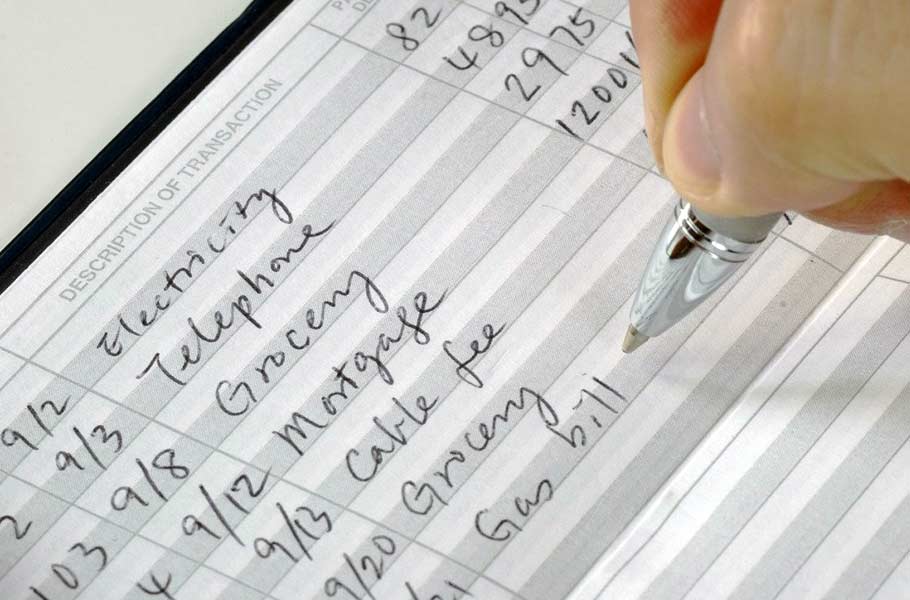When it comes to managing your finances, one of the fundamental tools is a checking account. While many banks advertise free checking accounts, it’s important to dig deeper and understand the potential hidden fees that may apply. This article explores whether all checking accounts are truly free and what you need to watch out for to avoid unexpected charges.

Key Takeaways
- Many checking accounts come with various fees, but there are ways to avoid them by meeting specific criteria or choosing the right type of account.
- Online banks and credit unions often offer lower fees and better fee waiver options compared to traditional big banks.
- Regularly monitoring your account and understanding the fee structures can help you keep your checking account cost-effective.
Are “free checking accounts” truly free?
Although many banks promote free checking accounts, they often come with extra fees. Some accounts might waive monthly charges only if you meet specific requirements, such as keeping a minimum balance or setting up direct deposits.
Additionally, fees for out-of-network ATM withdrawals and overdrafts are common and can add up quickly. To avoid surprise charges, it’s important to review the terms carefully before opening a checking account. Comparing different options can help you find one that best fits your needs without extra costs.
Types of Fees Associated with Checking Accounts
When choosing a checking account, it’s essential to be aware of the various fees that can be associated with them. These fees can quickly add up and impact your finances if you’re not careful.
Monthly Maintenance Fees
Monthly maintenance fees are charges that banks impose just for holding a checking account. These fees can vary widely, typically ranging from $5 to $15 per month. Some banks may waive these fees if you meet certain criteria, such as maintaining a minimum balance or setting up direct deposits.
Overdraft Fees
Overdraft fees occur when you spend more money than you have in your account, causing your balance to drop below zero. Banks charge these fees to cover the cost of processing transactions that exceed your available balance. Overdraft fees can be significant, often around $35 per incident. Repeated overdrafts can quickly add up, creating a substantial financial burden.
ATM Fees
ATM fees are charged when you use an out-of-network ATM. These fees can be imposed by both your bank and the ATM owner, leading to double charges. To avoid these fees, use ATMs within your bank’s network or take advantage of accounts that reimburse out-of-network ATM fees.
Minimum Balance Requirements
Some checking accounts require you to maintain a minimum balance to avoid fees. If your balance falls below the required amount, you might be charged a fee. These requirements vary by bank, with some needing as little as $100, while others might require $1,500 or more. Banks like Bank of America and Chase are known for having such requirements.
Other Common Fees
- Paper statement fees: Banks may charge for sending paper statements, usually around $2 per month. Opting for electronic statements can eliminate this fee.
- Foreign transaction fees: When using your debit card abroad, you might incur foreign transaction fees, typically around 3% of the transaction amount.
- Early account closure fees: If you close your account shortly after opening it, you could be charged an early closure fee, often around $25.
Factors That Can Make a Checking Account Free
While many checking accounts come with fees, certain factors can help you avoid these charges and maintain a free checking account.
Direct Deposit
Setting up direct deposit can often waive monthly maintenance fees. Many banks offer free checking if you have a certain amount of money directly deposited into your account each month, typically from your employer or government benefits.
Minimum Balance Maintenance
Some accounts are free if you maintain a specified minimum balance. For example, keeping $1,500 or more in your account can help you avoid monthly fees at several major banks.
Student and Senior Accounts
Special checking accounts for students and seniors often come with waived or reduced fees. These accounts cater to individuals with different financial needs and typically have fewer requirements for fee waivers.
Credit Union Accounts
Credit unions generally offer lower fees compared to traditional banks. They often provide free checking accounts with fewer or no minimum balance requirements, making them a cost-effective alternative for many consumers.
Online Banks
Online banks typically have lower overhead costs compared to traditional brick-and-mortar banks. As a result, they often offer free checking accounts with no monthly maintenance fees. Additionally, online banks may provide higher interest rates on checking accounts and reimburse ATM fees, making them an attractive option for fee-conscious consumers.
Comparing Banks and Credit Unions
Choosing the right financial institution for your checking account involves comparing different types of banks and credit unions. Each type offers distinct advantages and potential drawbacks, especially regarding fees.
Big Banks vs. Credit Unions
Big banks often have extensive branch networks and a wide range of services. However, they tend to have higher fees and stricter requirements for waiving those fees. Credit unions, on the other hand, typically offer lower fees and more personalized customer service. They often have more lenient requirements for fee waivers and may provide higher interest rates on accounts.
Regional and Community Banks
Regional and community banks often strike a balance between the extensive services of big banks and the personalized approach of credit unions. They typically offer competitive fee structures and may have lower fees than big banks. These banks also tend to be more community-focused and may provide better customer service. However, their smaller network of branches and ATMs could be a limitation for some customers.
Strategies to Avoid Checking Account Fees
Minimizing checking account fees requires a proactive approach. Here are some effective strategies to keep your account fee-free.
Regularly Monitor Your Account
Keeping track of your account balances and transactions is crucial to avoid fees. Regular monitoring helps you spot any potential issues, such as low balances or unauthorized transactions, allowing you to address them promptly before they incur fees.
Opt for Online Statements
Switching to electronic statements can help you avoid paper statement fees. Most banks offer the option to receive statements via email or through their online banking portal. This not only saves you money but also helps reduce paper waste.
Linking Accounts
Linking your savings and checking accounts can provide a safety net to avoid overdraft fees. Many banks offer overdraft protection by automatically transferring funds from your linked savings account to cover transactions that would otherwise overdraw your checking account.
Choosing the Right Account for Your Needs
Selecting the best checking account for your personal banking habits is essential. Evaluate how you use your account—such as the number of transactions, balance levels, and ATM usage—and choose an account that aligns with these habits. Look for accounts that offer fee waivers or rewards for behaviors you already practice, such as maintaining a minimum balance or setting up direct deposits.
Popular Banks and Their Fee Structures
Understanding the fee structures of different banks can help you make an informed decision about which checking account to choose. Here are some examples of popular banks and how you can avoid their fees.
Bank of America
Bank of America charges a monthly maintenance fee of $12 for its standard checking account. This fee can be waived if you meet one of the following criteria:
- Maintain a minimum daily balance of $1,500.
- Have at least one qualifying direct deposit of $250 or more.
- Enroll in the Preferred Rewards program.
Other fees include a $35 overdraft fee and a $2.50 out-of-network ATM fee. To avoid these fees, set up direct deposits, maintain the required minimum balance, and use Bank of America ATMs.
Chase
Chase’s Total Checking account has a monthly maintenance fee of $12, which can be waived by:
- Having direct deposits totaling $500 or more.
- Maintaining a daily balance of $1,500 or more.
- Keeping an average daily balance of $5,000 across linked Chase accounts.
Chase also charges a $34 overdraft fee and $2.50 for using non-Chase ATMs. Avoid these fees by using Chase ATMs, setting up direct deposits, and keeping track of your account balance to prevent overdrafts.
Wells Fargo
Wells Fargo’s Everyday Checking account comes with a $10 monthly maintenance fee. This fee can be waived if you:
- Have 10 or more posted debit card transactions.
- Maintain a minimum daily balance of $500.
- Set up direct deposits totaling $500 or more.
- Link your account to a Wells Fargo Campus ATM or a Wells Fargo mortgage.
Overdraft fees are $35, and non-Wells Fargo ATM fees are $2.50. To avoid these fees, use Wells Fargo ATMs, maintain the required balance, and set up qualifying direct deposits.
SoFi
SoFi, an online bank, offers a SoFi Checking and Savings account with no monthly maintenance fees, no minimum balance requirements, and no overdraft fees. Additionally, SoFi provides reimbursement for ATM fees incurred worldwide, making it a highly attractive option for those who frequently use out-of-network ATMs.
SoFi’s lack of traditional fees, combined with competitive interest rates on deposits and a user-friendly online platform, makes it an excellent choice for fee-conscious consumers. However, as an online bank, it does not offer in-person banking services, which might be a consideration for some customers.
Navy Federal Credit Union
Navy Federal Credit Union generally offers lower fees compared to big banks. For example, their Free Active Duty Checking account has no monthly maintenance fee and offers up to $20 in ATM fee rebates per statement cycle. They also have a $20 overdraft fee, which is significantly lower than most big banks.
Credit unions like Navy Federal typically have more lenient fee structures and often provide better rates on loans and deposits. They also tend to offer better customer service, making them a great alternative to traditional banks.
Conclusion
Choosing a checking account with minimal fees requires careful consideration of the different types of fees and how they apply to your banking habits. By understanding the fee structures of various banks and credit unions, you can make an informed decision that best suits your financial needs.
Regularly reviewing your account terms is essential to stay informed about potential fees and changes. This proactive approach will help you avoid unnecessary charges and ensure that your checking account remains as cost-effective as possible.



